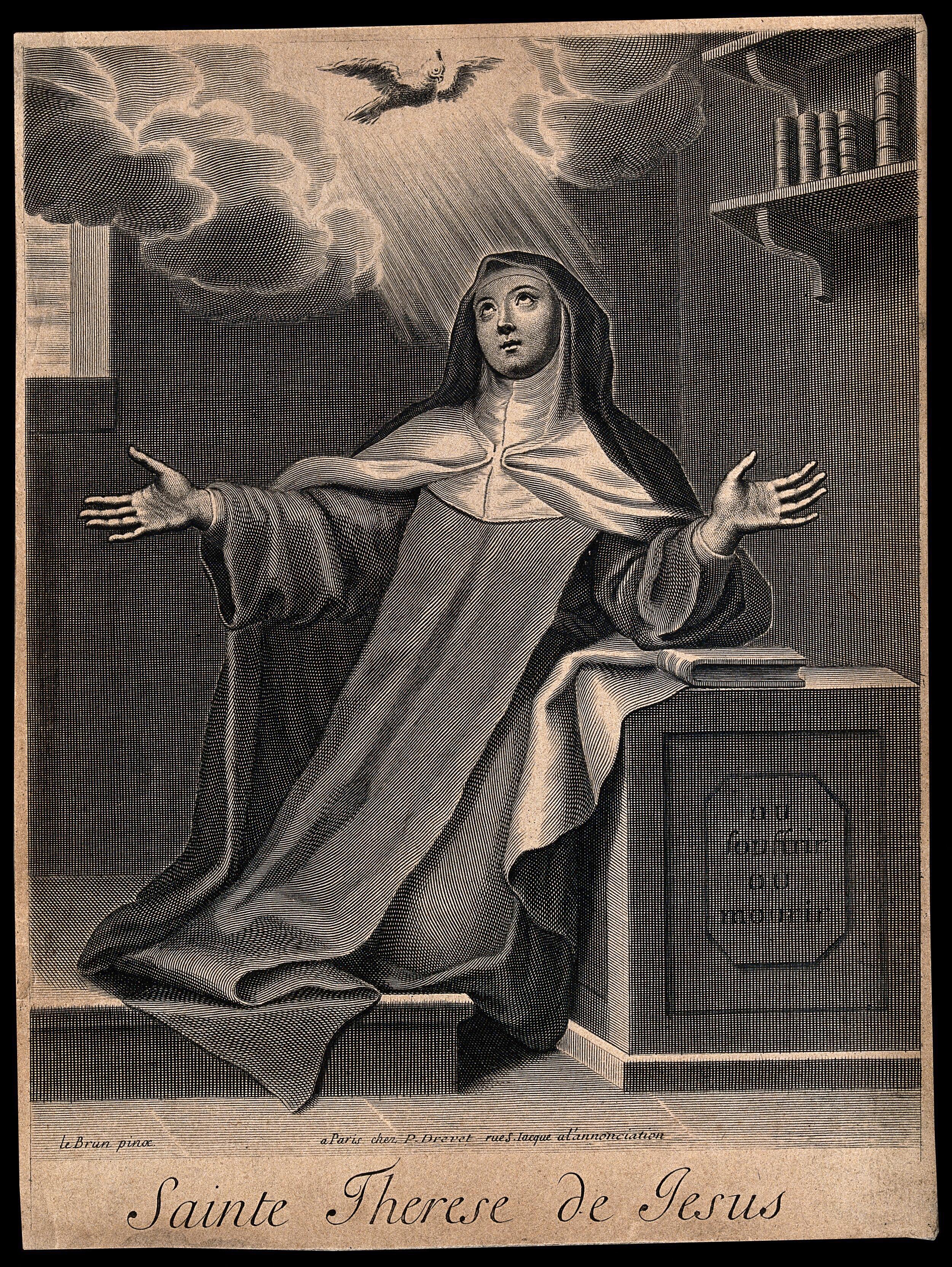The Roman Catholic Reformer

Teresa of Ávila is not only one of the most well known female saints of the Christian Church but also likely one of the most recognizable Christian names of the last 500 years. Born in 1515 and dying in 1582, she is uncommon within the Church Year’s lineup of saints because of her noble background, Spanish heritage, and deep-seeded Roman Catholic background.
Born to a wealthy family during the Reformation in sixteenth-century Ávila, Spain, Teresa was one of ten children, destined for a life in the convent. However, the life of a nun was not one completely dedicated to contemplation or austerity, as many assume. Instead the convent often meant that well-to-do women like Teresa could continue to live their lives of ease and luxury, bringing their riches and servants with them into the institution.
Despite her luxurious background, Teresa did not go without her own share of hardship and strife. Her mother died when she was around fifteen. Moreover, after she entered the convent in Ávila, it was said that she fell seriously ill, even falling into a coma and being partially paralyzed for three years.
As time went on and she recovered, Teresa was said to think more and more about her faith and yearned to attain a greater understanding of Jesus and Scripture. Her prayer life deepened, and she dedicated herself to a life of extreme devotion to God. This dedication led her to reform monastic life in light of the frivolity that she had come to see within the institution. These reforms were met with much hostility from those who had municipal and religious interests in the convent, but she continued to promote them. Eventually her reforms were approved.
In 1562 she opened a new monastery and she traveled throughout Spain to found and oversee seventeen other convents of the Carmelite nuns. She died on October 4, 1582. Teresa became broadly popular after her death because of her impact on the Roman Catholic Church and her writings. Her autobiography and The Interior Castle became particularly well known works and still stand as an integral part of the Spanish Renaissance literary canon.
A Brief History

So what does Teresa have to do with Lutheranism you might ask. Why would the life of this Carmelite nun and Roman Catholic mystic have meaning for us today? First of all it is important to note that Teresa is credited with the task of reviving Roman Catholicism during the Reformation era—in part because Martin Luther and the Protestant Reformation had shaken the Roman Church to its core during that same time period.
In fact, the “Lutherans,” a term that Teresa was said to apply liberally to all those whom she viewed as breaking from the one true faith, greatly influenced Teresa and her work, inspiring her to dedicate her life to the vigilant reform of the Roman Church. While mutual condemnations caused Luther and his compatriots to speak to the Roman Church as external voices, Teresa worked for internal change, pushing her church’s members to stand as a witness against corruptions that she had observed in that church’s spiritual life.
Eventually her efforts at reform significantly impacted the Roman Church, and she was seen as a model for how that institution could be changed internally by those who sought a purer application of the Word of God. Perhaps this work is what inspired our own Lutheran father, Wilhelm Loehe, to include her in his sanctoral calendar.
While Teresa and her story might seem out of place within our contemporary Lutheran context, her popularity and zeal for the Church solidified her name within the nineteenth-century Christian mind of Loehe and makes her name one with which we all ought to be familiar. We hope that you’ll keep this in mind as you reflect on St. Teresa and join many around the world acknowledging her day on October 15th.

Collect
Hear us, O God, our Savior: so that we, who rejoice in the feast of Blessed Teresa, Thy virgin, may learn from her in spirit of loving devotion; through Jesus Christ, Thy Son, our Lord, who liveth and reigneth with Thee and the Holy Ghost: ever one God, world without end. Amen
Lessons
Epistle
Gospel
Resources
Propers found in Daily Divine Service Book: A Lutheran Daily Missal, edited by the Rev. Heath Curtis
References:
1. Encyclopedia Britannica entry on St. Teresa of Ávila
2. Martina Moyski, Teresa of Ávila: Mystic and Fierce Reformer, October 2019.
Images:
1. Sainte Therese de Jesus, Charles Le Brun, France, 1703.
2. Teresa of Ávila, François Gérard, France, 1827.
3. Saint Teresa of Ávila’s vision of the dove, Peter Paul Rubens, The Netherlands, ca. 1614.
Some links might be affiliate links which means we may receive a small commission at no extra cost to you. As an Amazon Associate we earn from qualifying purchases.



[…] St. Teresa’s Day on October 15th has historically been celebrated throughout the centuries with an egg yolk sweet—yemas! This candied egg treat is said to have been a result of the Spanish cultural tradition of making sherry and wine, a popular culinary delight in Avila, where St. Teresa was from. The production of this sherry and wine often called for egg whites to be used during the refining and clarifying process. The remaining egg yolks were then given to local convents or monasteries to use in their baked goods and sweets. […]